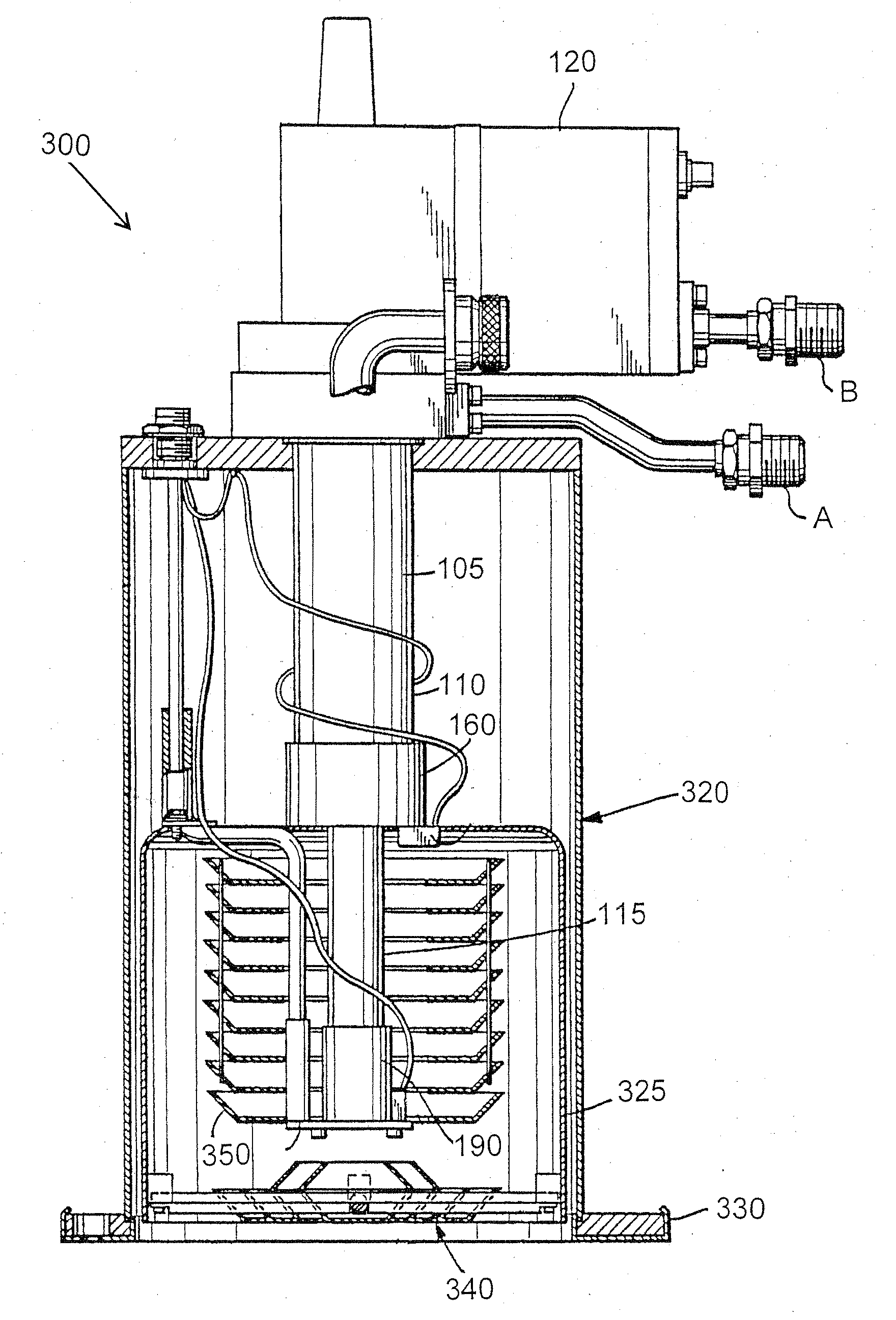Cryogenic Pump Employing Tin-Antimony Alloys and Methods of Use
a cryogenic pump and alloy technology, applied in the direction of positive displacement liquid engine, light and heating apparatus, liquid fuel engine, etc., can solve the problems of nephropathy, colic-like abdominal pain, blood and brain disorders, etc., to achieve clean vacuum environment, less hazardous and inexpensive, and high volumetric heat capacity
- Summary
- Abstract
- Description
- Claims
- Application Information
AI Technical Summary
Benefits of technology
Problems solved by technology
Method used
Image
Examples
Embodiment Construction
[0034]The foregoing will be apparent from the following more particular description of example embodiments of the invention, as illustrated in the accompanying drawings in which like reference characters refer to the same parts throughout the different views. The drawings are not necessarily to scale, emphasis instead being placed upon illustrating embodiments of the present invention.
[0035]Metallic tin (Sn) is generally non-toxic to humans, even upon uptake of small concentrations for a long period of time, and elemental tin rarely affects human health. As such, tin is an environmentally sensible substitute for lead as a regenerative heat exchanger material applied to cryogenic refrigerators in cryopumps, without significantly compromising volumetric heat capacity as shown in FIG. 1.
[0036]Tin has two allotropes at normal pressure and temperature: gray alpha (α)-tin and white beta (β)-tin. Below 13.2° C. at equilibrium, it exists as α-tin, which has a cubic crystal structure similar...
PUM
 Login to View More
Login to View More Abstract
Description
Claims
Application Information
 Login to View More
Login to View More - R&D
- Intellectual Property
- Life Sciences
- Materials
- Tech Scout
- Unparalleled Data Quality
- Higher Quality Content
- 60% Fewer Hallucinations
Browse by: Latest US Patents, China's latest patents, Technical Efficacy Thesaurus, Application Domain, Technology Topic, Popular Technical Reports.
© 2025 PatSnap. All rights reserved.Legal|Privacy policy|Modern Slavery Act Transparency Statement|Sitemap|About US| Contact US: help@patsnap.com



